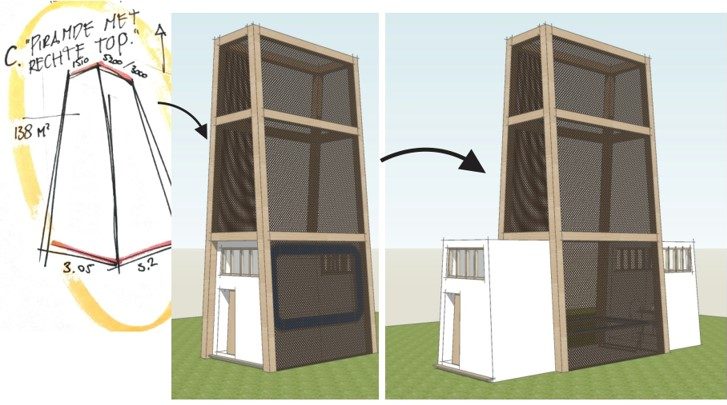
RRM (rapid renewable materials) originate from nature. During their growth they absorb CO₂ from the air. Compared to using traditional building materials, you save a CO2eq emission of 90 TON in the realization of an apartment for four people if you replace steel and concrete with RRM.
RRM are still used on a fairly small scale in the building industry. To promote the use of RRM, it is necessary to involve more building partners. These partners must be assisted to either build up or expand their knowledge of RRM.
Architects and architecture students will, by participating in this project, be trained in the use of RRM during the design and technical elaboration of buildings.
Knowledge and guidelines
During the project, we work towards knowledge and guidelines, stated in a digital guide, for the use of rapid renewable materials in the construction of a building. This is done by analyzing the relationship between CO2-emissions and the use of RRM during the design and realization phase of a building.
In addition, different RRM are compared with each other and traditional building materials.
In pointing out the difference between ‘sequestered CO2’ and ‘embodied CO2’ the project partners can objectify data on CO2-emissions caused by the production of the materials.
RRM digitale gids
All information is cataloged by the design teams and published in a digital guide, which includes:
The characteristics of rapid renewable materials in the following areas:
- mechanical
- building physics
- chemical
- ecological
- aesthetic
Guidelines for the use of rapid renewable materials in the construction of a building regarding:
- floor compositions
- wall assemblies
- roof compositions
- door and window details
- texts for specifications and specifications
innovative architectural spaces
Under the guidance of an architectural firm, students will design innovative architectural spaces (in this case -2020-2021- a Tiny house for an Olympic Athlete in LOCK-DOWN) based on the applications of RRM in a building.
In addition to the design of the architectural space, students investigate how these designs can be further developed into implementation details. In this way they also learn how to build with RRM.
























